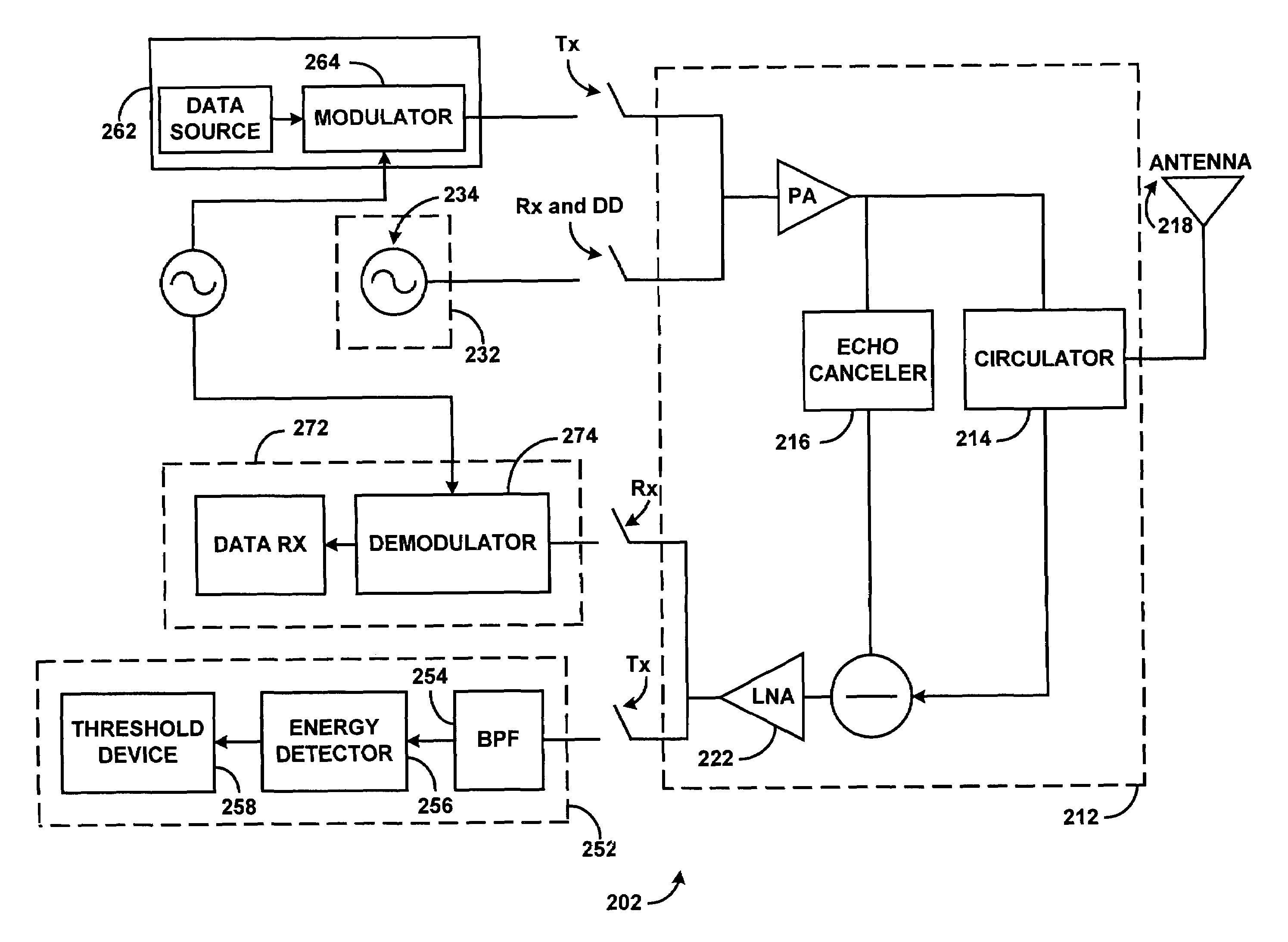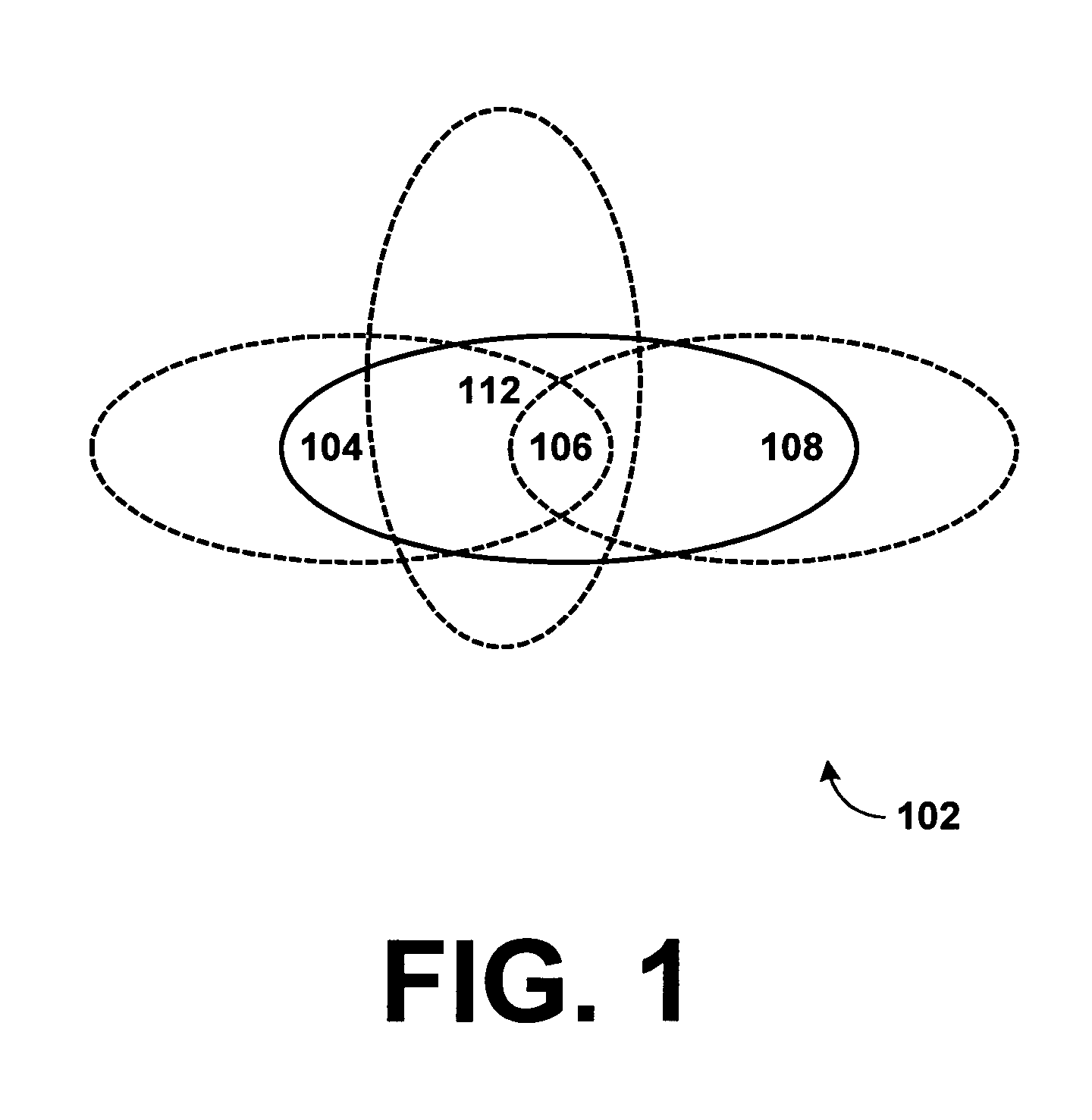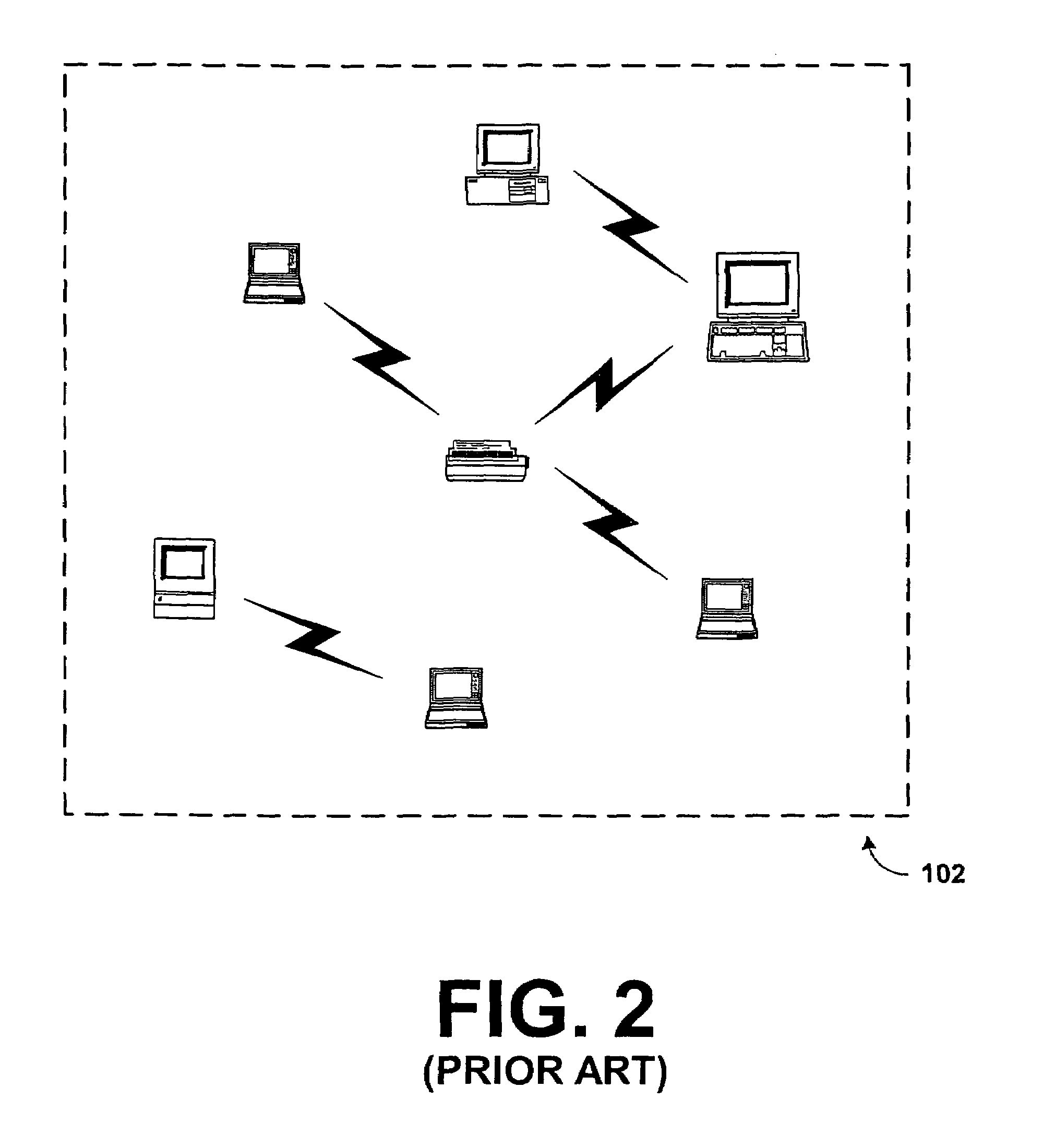System and method for providing high speed wireless media access
a wireless media access and wireless technology, applied in the field of wireless telecommunication, can solve the problems of adding new challenges, cost, reliability and ease of management, and the inability of central nodes in ad-hoc networks, and achieves high data rates, high efficiency, and high data efficiency.
- Summary
- Abstract
- Description
- Claims
- Application Information
AI Technical Summary
Benefits of technology
Problems solved by technology
Method used
Image
Examples
Embodiment Construction
[0028]Referring now to the drawings, wherein like reference numerals designate corresponding parts throughout the drawings, FIG. 2 illustrates a prior art distributed wireless network 102, also called an ad-hoc network. The ad-hoc network 102 is a group of wireless terminals communicating with one another with no pre-existing infrastructure in place. The wireless terminals, which may include, but are not limited to, computers, printers, and laptops, typically contain a wireless interface, such as a radio frequency or infra-red interface, and exchange information between one-another in a distributed manner. As illustrated, an ad-hoc network 102 has no central administration and this ensures that the network 102 does not collapse when one of the terminals is powered down or moves away.
[0029]In an ad-hoc network 102 all data transmission and reception is in the same frequency band since there are no special terminals (hereinafter, nodes) to translate the transmission from one frequency...
PUM
 Login to View More
Login to View More Abstract
Description
Claims
Application Information
 Login to View More
Login to View More - R&D
- Intellectual Property
- Life Sciences
- Materials
- Tech Scout
- Unparalleled Data Quality
- Higher Quality Content
- 60% Fewer Hallucinations
Browse by: Latest US Patents, China's latest patents, Technical Efficacy Thesaurus, Application Domain, Technology Topic, Popular Technical Reports.
© 2025 PatSnap. All rights reserved.Legal|Privacy policy|Modern Slavery Act Transparency Statement|Sitemap|About US| Contact US: help@patsnap.com



